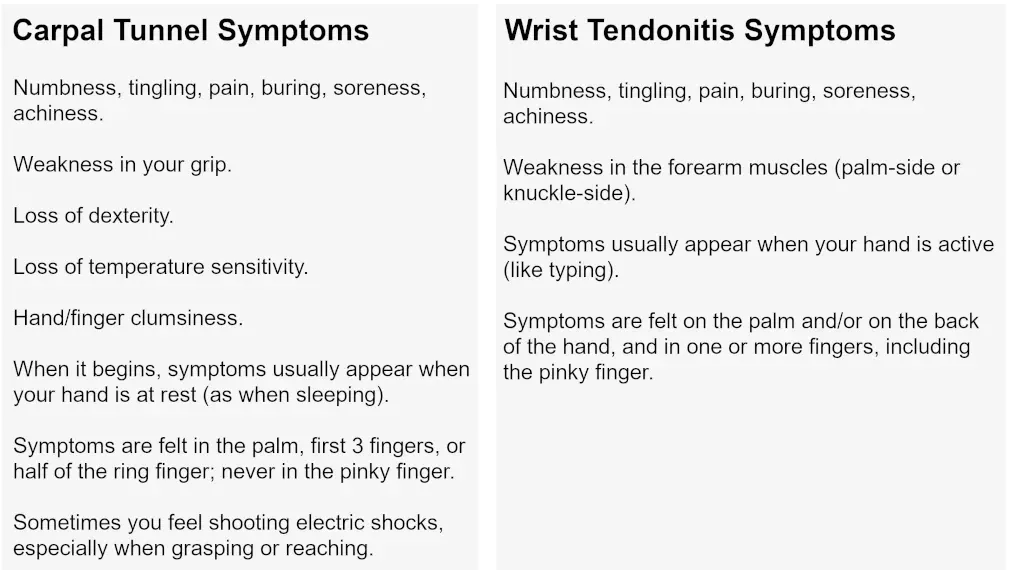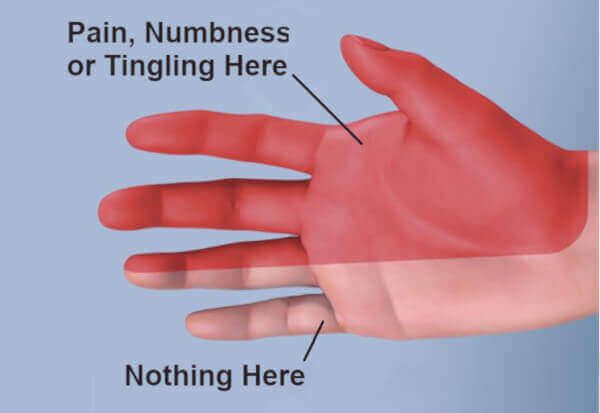What is Tendonitis of the Wrist?
Table of Contents
- Understanding tendonitis of the wrist
- Is it tendonitis of the wrist?
- How to tell the difference between carpal tunnel & tendonitis
- Rest & avoidance to treat tendonitis of the wrist
- Wrist brace to treat tendonitis of the wrist
- About wrist bracing for tendonitis
- Cautions using a wrist brace
- Summary
- FAQs
- About
Understanding tendonitis of the wrist
If you’ve been feeling pain, stiffness, or numbness in your wrist, hand, or fingers, you may be dealing with
wrist tendonitis—one of the most common and treatable musculoskeletal conditions today. The good news is that most cases respond beautifully to simple, nonsurgical treatments like rest, gentle stretching, and wearing a wrist brace.
Wrist tendonitis usually develops from
overuse—when the tendons that connect your forearm muscles to your wrist and fingers are asked to do too much for too long. Repetitive typing, gripping, or lifting can strain these tendons until tiny micro-tears form.
On a microscopic level, these overworked tendons begin to develop small
adhesions, making them less flexible and more prone to friction as they move. That friction leads to
irritation and swelling, which further restricts the tendon’s smooth motion.
As a result, your wrist starts to feel sore, tight, or even weak when performing normal activities. The key to recovery is reducing that inflammation early—before it worsens and limits your hand function.
In this article, we’ll explain exactly what causes wrist tendonitis, how to recognize its symptoms, and which treatments and exercises can help you recover quickly and prevent it from returning. We'll also explain how other
disorders, like a simple
wrist sprain, can cause similar symptoms.
How to tell the difference between carpal tunnel & tendonitis
Carpal tunnel syndrome and wrist tendonitis are very similar. They are similar is what causes them and in their symptoms. It's useful to know some distinctions between the two disorders.
- Wrist tendonitis & sprains usually hurt more when your fingers are moving.
- Carpal tunnel syndrome usually hurts more when your fingers are resting.
These differences occur in the early stages of carpal tunnel syndrome. More
advanced stages will be painful whether or not your fingers are moving.
The chart below is a useful side-by-side symptoms comparison of carpal tunnel syndrome versus tendonitis of the wrist.
It's important to be 100% certain about what's causing the problem to begin with. When you confirm that you indeed have tendonitis of the wrist, then you can treat it relatively easily.
Ordinary tendonitis symptoms are treated effectively with:
- Rest & avoidance
- A wrist brace
These remedies will treat mild and moderate wrist tendonitis. But severe wrist tendonitis or another hand pain condition may not respond to these simple treatments. See your doctor if your wrist tendonitis is severe.
Rest & avoidance to treat tendonitis of the wrist
If you have tendonitis it's usually easy to figure out what's causing it. For example, too much typing strains fingers and wrists. As a result, the pain will focus around your fingers or hand. Likewise, too much lifting will probably cause pain focused at the wrist instead of the fingers. So it's usually no mystery what caused the symptoms you have.
Rest is the first thing any damaged tissue (tendon, muscle, etc.) must do. The human body is remarkably good at healing itself. And rest is the body’s best defense against such injury and disease.
For example, when you’re sick or injured, you often feel tired. That’s because your body is telling your brain to temporarily shut down so that it can start the process of restoration (healing).
Therefore, almost any problem in the body can be healed by simple rest. So rest your hand as often as you can. That also means to
avoid doing what was causing your tendons to become strained.
See this list of harmful hand activities.
Simply not performing the stressful activity will allow tendon micro-structures to repair themselves. Depending on the amount of tendon damage you have, restoration & healing can take
a few days to several weeks.
Sometimes you just can't stop the activity that caused the tendonitis. If
your job requires typing for instance, then take multiple short breaks. Take that breaking opportunity to
stretch out your hands. Here are
hand exercises for hairdressers (who are notorious for straining their hands) that apply to everybody with tendonitis of the wrist.
Wrist brace to treat tendonitis of the wrist
Before discussing wrist braces to treat tendonitis, let's get some terms straight.
You might have heard the term "splint" and “brace” used interchangeably. In fact, they're a bit different. Here's their medical definition:
- A wrist splint refers to a device that immobilizes the wrist.
- A wrist brace supports the wrist in the neutral position. (The neutral position is essentially "straight".)
For everyday purposes there's little difference between the two terms. So we’ll use “brace” here.
About wrist bracing for tendonitis
In most instances a wrist brace for tendonitis is useful to aid your joint's natural healing abilities. That’s because the brace allows the wrist joint to
rest and not strain.
The brace gives your wrist the opportunity to rest in it's natural and "neutral position". That means there's no stress on the joint.
And that restful time is most crucial at night.
You should
always
wear a wrist brace at night while you sleep if you have tendonitis of the wrist. (At that point, we can call it a "nocturnal brace" or "night brace".)
When we sleep, we unconsciously over-bend our hand. Hyper-flexing and hyper-extending the hand does tremendous damage inside the wrist joint. But a wrist brace prevents that movement while we sleep. That's why it’s the best way to rest the hand at night.
Most people find that sleeping with a night brace for tendonitis is uncomfortable at first. However, that discomfort will disappear soon. You won’t even know you’re wearing a brace after a few nights.
Cautions using a wrist brace
If you have tendonitis of the wrist, wearing a wrist brace during the day is helpful. The brace helps avoid straining your wrist by preventing over-bending. However, it's important to not rely on the brace for weight support. In other words, don't believe the brace will "take the weight" off something, because it won't (not much, anyway). The idea is to prevent over-bending, not help with weight bearing.
Some conditions require you wear a wrist brace 24/7. Sprains, fractures, ligament tears, etc. all require absolute immobilization. But if you immobilize your wrist, you also discourage restorative blood flow and
fluid drainage from the joint. In fact, the only way a joint can pump fluid into and out of it is by the joint's movement.
And since tendonitis is due to swollen tendons, you need to drain the fluid from the joint as often as possible. If the wrist joint is stationary all the time, fluid drainage doesn't occur efficiently.
Therefore, if you have wrist tendonitis, complete immobilization (24/7) may do more harm than good. Therefore, patients brace only
sparingly during the day - when necessary. Brace only when you expect to over-bend your wrist joint, as when lifting heavy objects. Then remove the brace.
Summary
The bottom line is that if you have tendonitis of the wrist, you should always wear a wrist brace while you sleep. During the day, wear it sparingly - if at all. And if you do, wear it only when doing heavy lifting. The brace will keep you from over-bending your wrist.
FAQs
Is it possible to have both tendonitis of the wrist and carpal tunnel?
Yes. In fact, this is a common problem. However, carpal tunnel syndrome is by far the most serious of the disorders because it is more difficult to treat and its potential to cause long term nerve damage.
Does flexor tendonitis and carpal tunnel have similar underling characteristics?
Yes. In fact, you can think of carpal tunnel syndrome as flexor tendonitis that's localized inside your wrist joint.
Are these two disorders treated similarly?
In short, yes. But carpal tunnel syndrome is much more resistant to treatment because it is protected inside the wrist joint. It therefore requires longer and more aggressive therapy.
About






